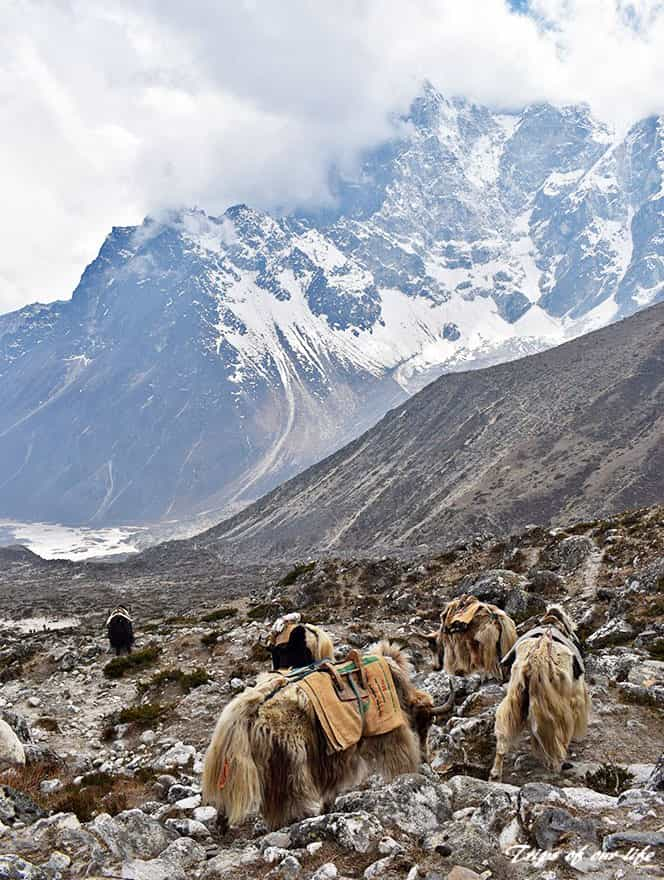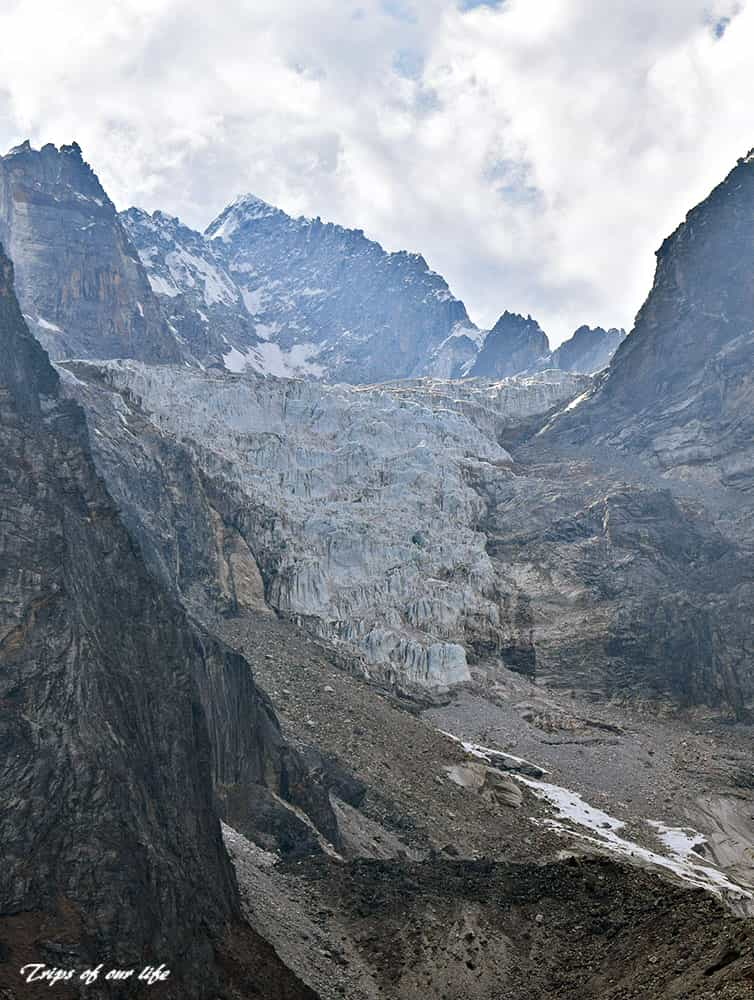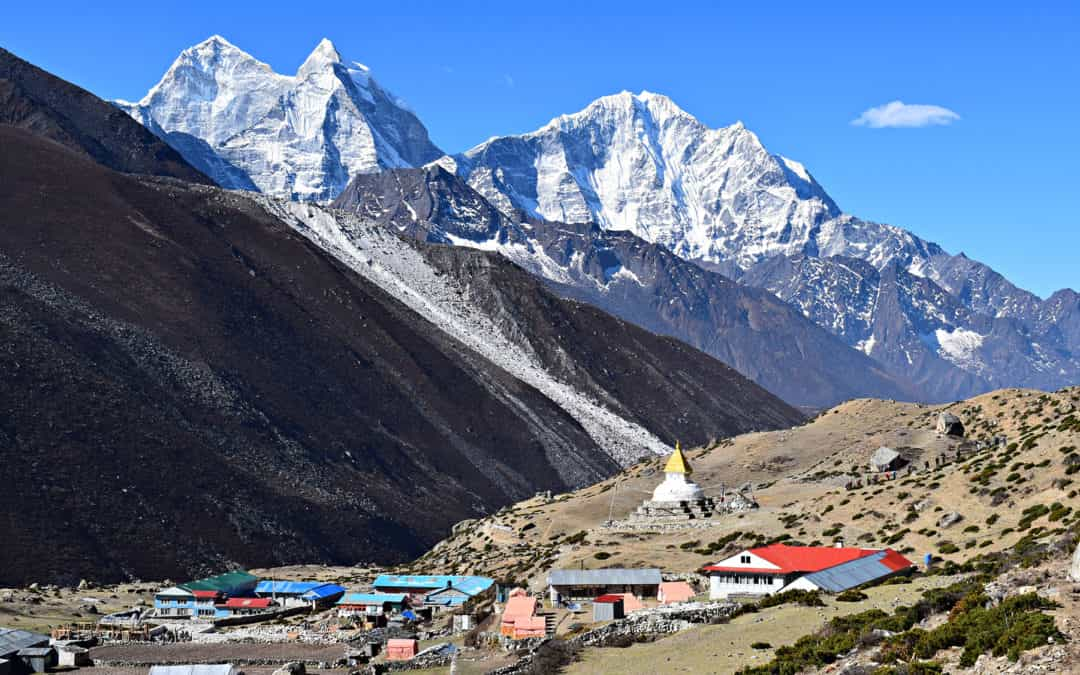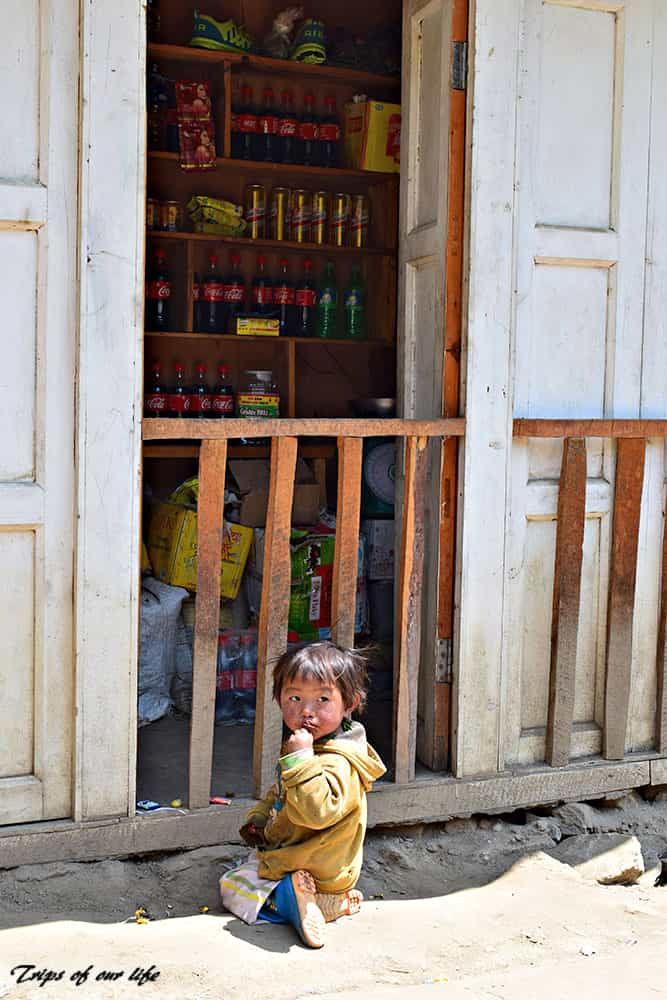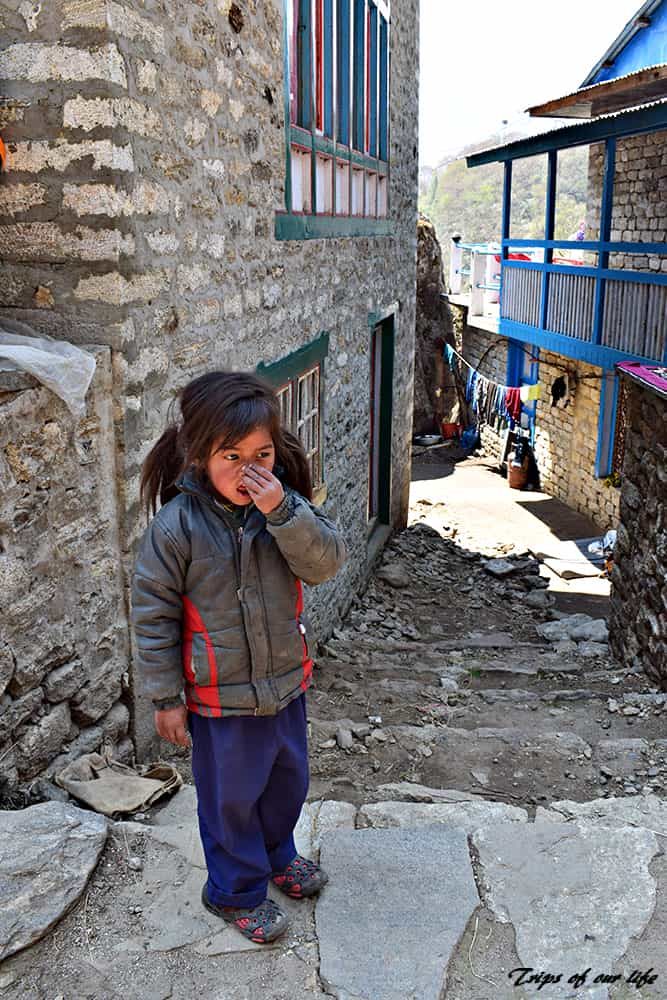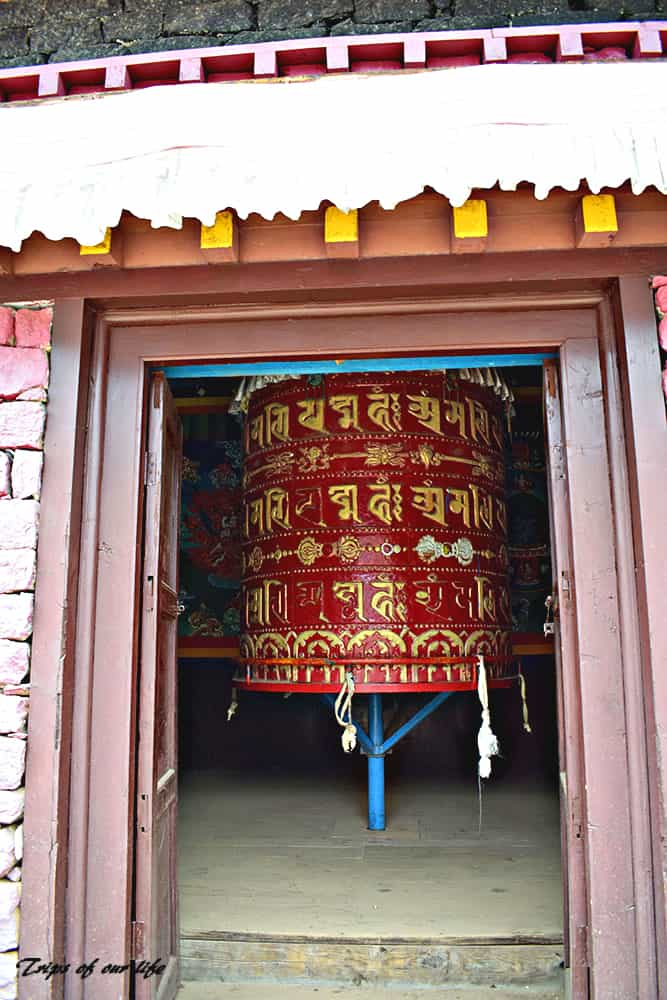Day 4
Hiking to Tengboche Monastery (3,860 m) and Deboche (3,860 m) – 10 km, 8 hrs.
The hike of the 4th day was moderate in terms of difficulty, with no particular problems due to the altitude difference.
After our breakfast, we left Namche Bazaar, enjoying the wonderful route along the Dudh Kosi River, with stunning views of the surrounding mountains. The atmosphere was relatively clear, so we could even see the peak of Mount Everest from some spots! Passing through rhododendron forests, suspension bridges and stupas, we stopped for lunch in the small village of Phunki Thenga. After about 2.5 hrs, we arrived at the Tengboche monastery, which is considered to be the highest in the world (regarding altitude, at 3.860m.), and the largest of the Himalayan region of Nepal.
Its location is quite privileged, since it is built on a hill, surrounded by beautiful nature and facing the top of the impressive mountain, Ama Dablam. Unfortunately that day, the place was covered in low clouds, so we had no visibility at all. In order to get into the main building of the complex, we had to take off our shoes and leave our stuff on a bench, in the inner courtyard. The prayer room is the only accessible place to the visitor, but photography is strictly forbidden. The hall is decorated with colorful prayer flags and figures on the walls, and the pilgrims must sit in front of the walls in order to pray and meditate. A large Buddha statue is placed in the center, while there are also musical instruments and clothes of Lamas monks placed around the hall.
After a while, we continued our hike to the village of Deboche, at 3.820 m. We arrived just before sunset and had our dinner and overnight stay in the guesthouse «Rododendron». The surprise of the day? I learned that the word “rhododendron” is used in Nepal just like in Greece, and also, this plant is the national flower of the country!
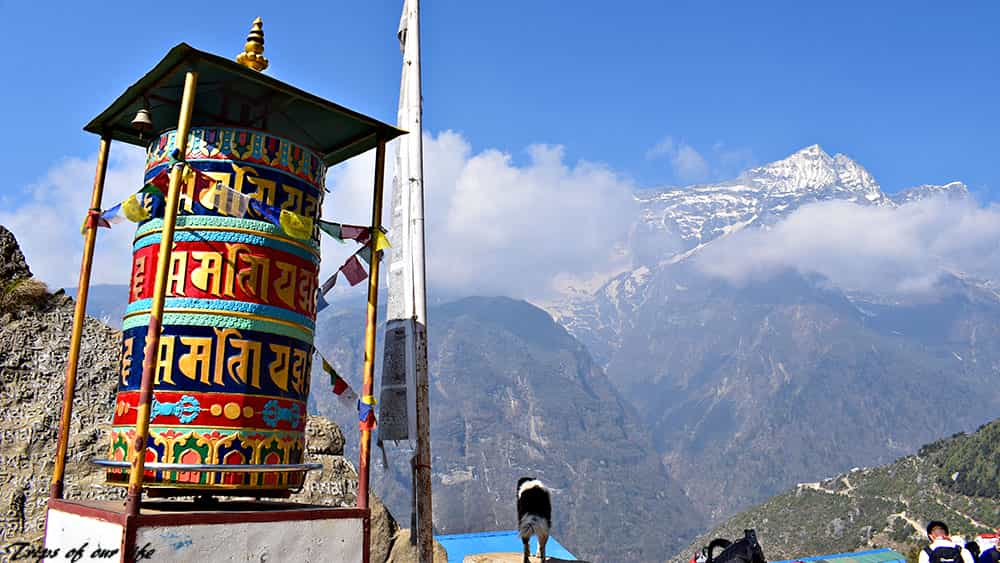
Prayer wheels and flags on top of the Himalayas
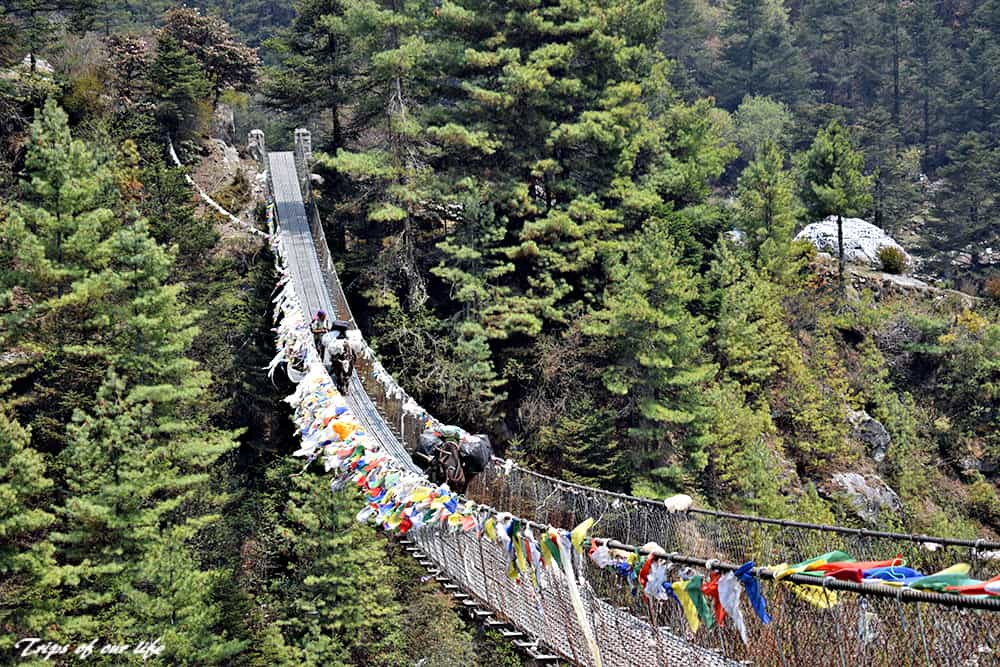
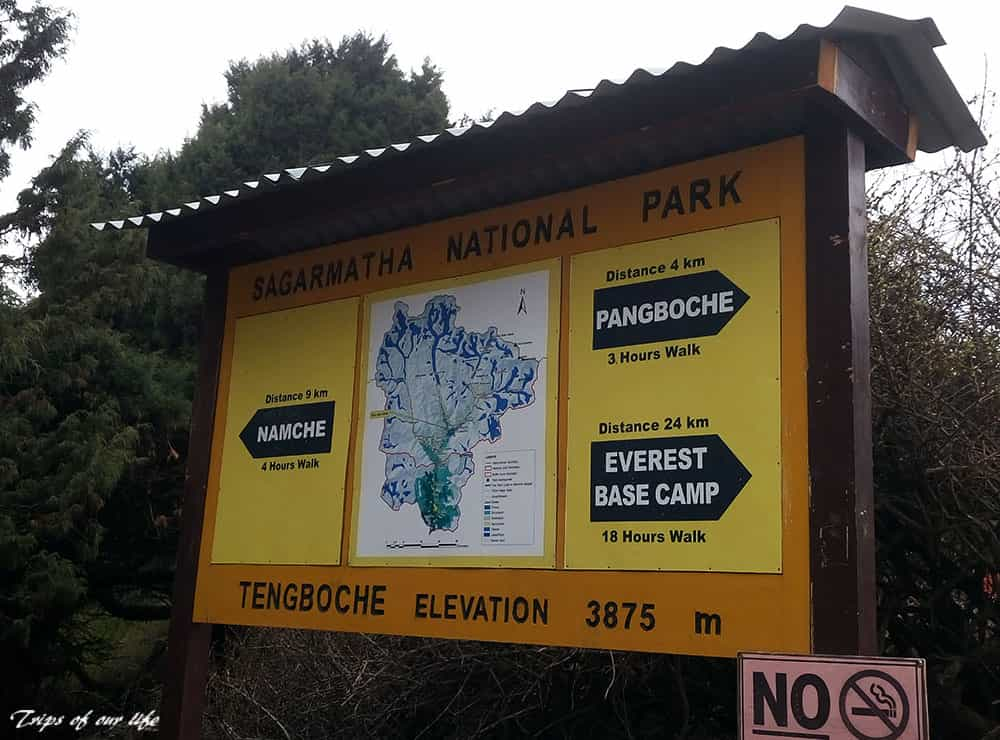
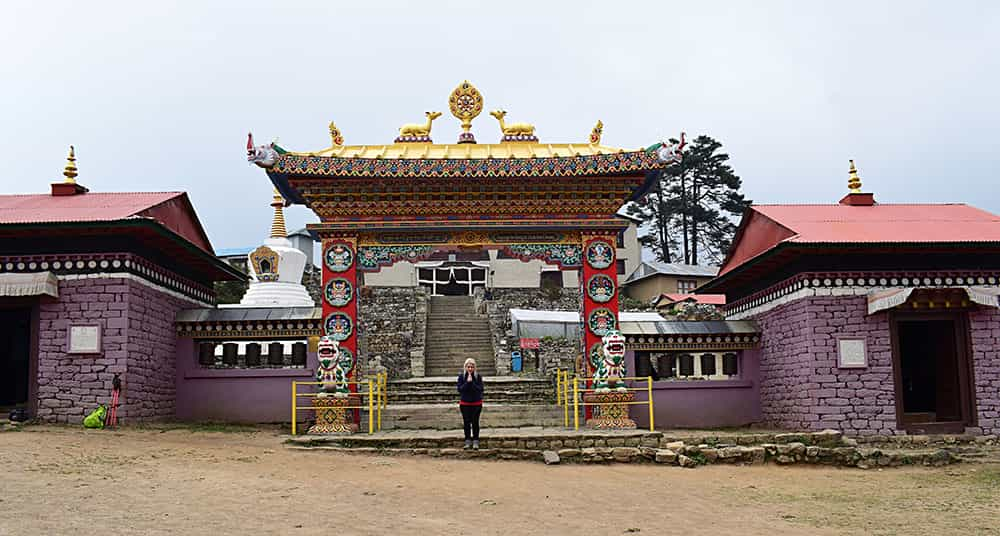
Tengboche Monastery at 3.875m.
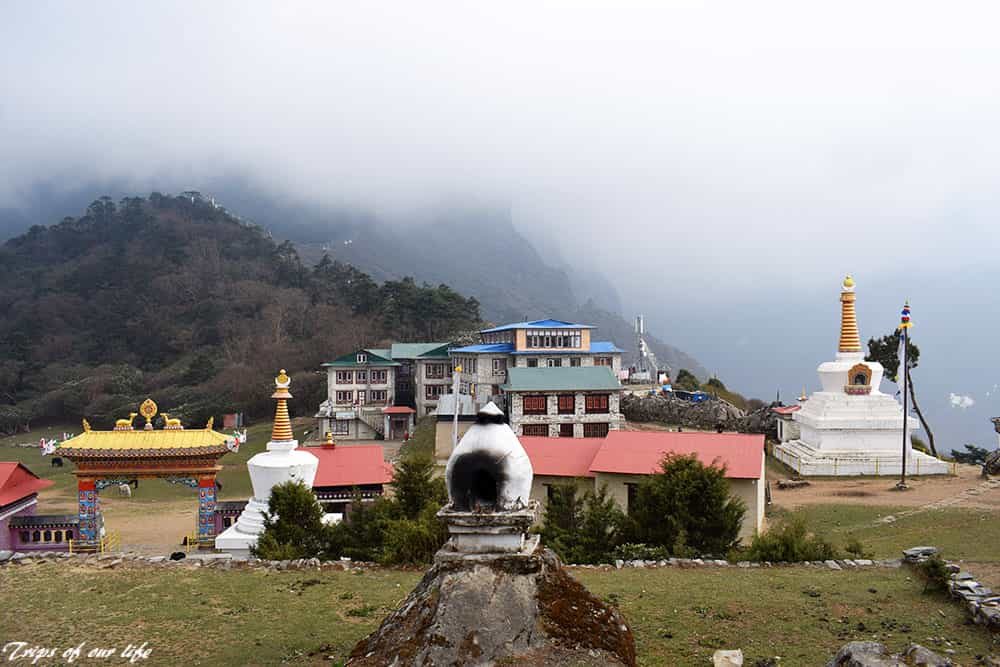
Tengboche Monastery at 3.875m.
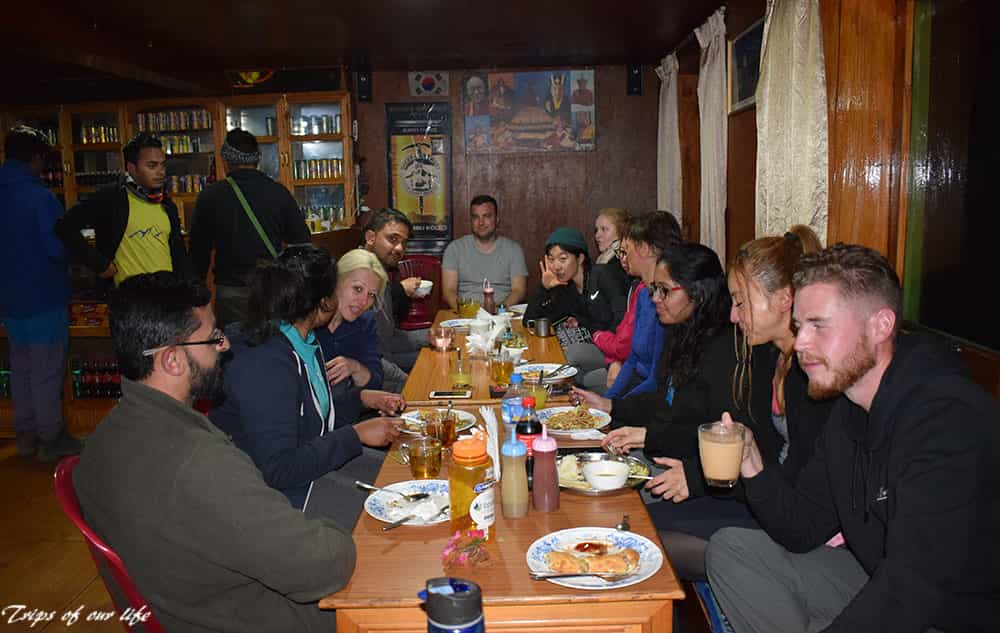
Dinner at the guesthouse “Rododendron” – Deboche
Day 5
Trekking to Dingboche (4,410 m) – 12 km. 7 1/2 hrs.
Today’s trekking was once more moderate in difficulty for me, dealing only with problems of my already damaged knees. Starting the 5th day of our mountaineering adventure, we passed by the valley of the river Imja Khola, crossing once again, lots of suspension bridges. On this particular trail, we met numerous “mani stones”, carved with prayers and symbols, being very popular in Tibetan Buddhism! The view was breathtaking! Surrounded by the snow-capped peaks of the mountains Lhotse, Island peak and Ama Dablam, we passed by the village of Pangboche and stopped for lunch in the small village of Shomare, at 4,040m.
After a 3 hours trekking, we finally faced the small stupa at the entrance of Dingboche valley from above, and walked down to the small traditional village of Sherpas, where we would spend the night. The village is built in an amazing location, with unlimited panoramic views of the most famous peaks of the country, especially the most beautiful mountain in the area, Ama Dablam!!
Our room was truly luxurious this time! Apart from having a wonderful view from our window to the mountains, it was the first time we had a private toilet in the room. However, there was no running water anywhere in the guesthouse. Instead of flushing in the toilet, we were pouring water using a jug from a large bucket. In order to wash our hands, we had to go down to the main hall on the ground floor, where there were buckets with taps, containing clean water.
The higher we were going up in altitude, the more difficult our survival was turning, as the fatigue of the long hikes, the low temperatures at night and the gradual lack of oxygen had already begun to negatively affect us.
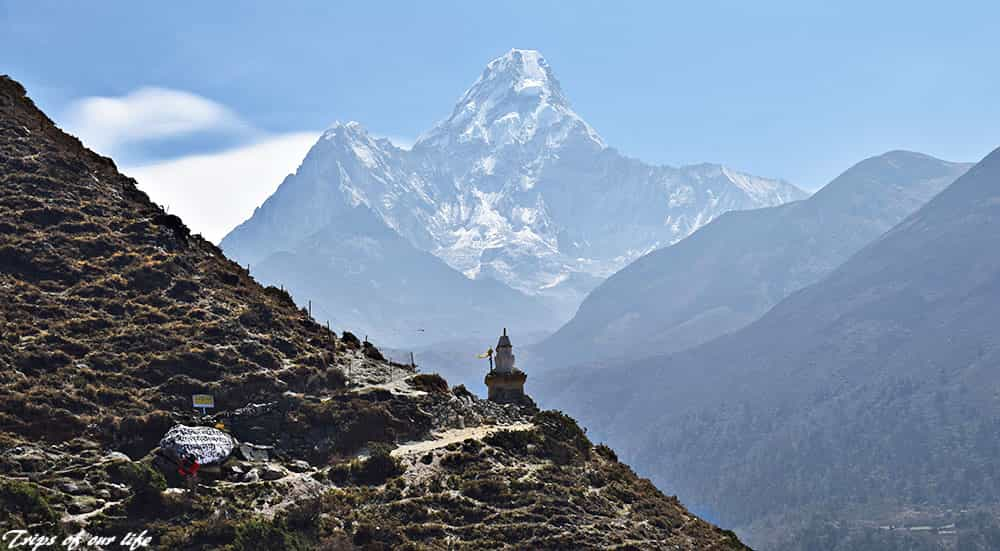
The imposing Ama Dablam mountain
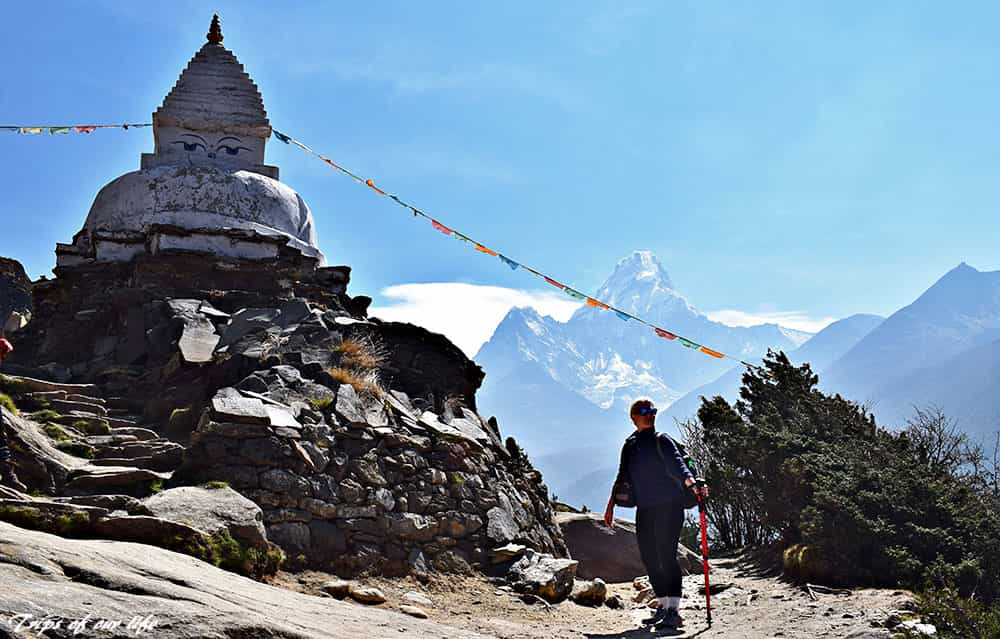
Stupas, prayer flags and Ama Dablam at the background


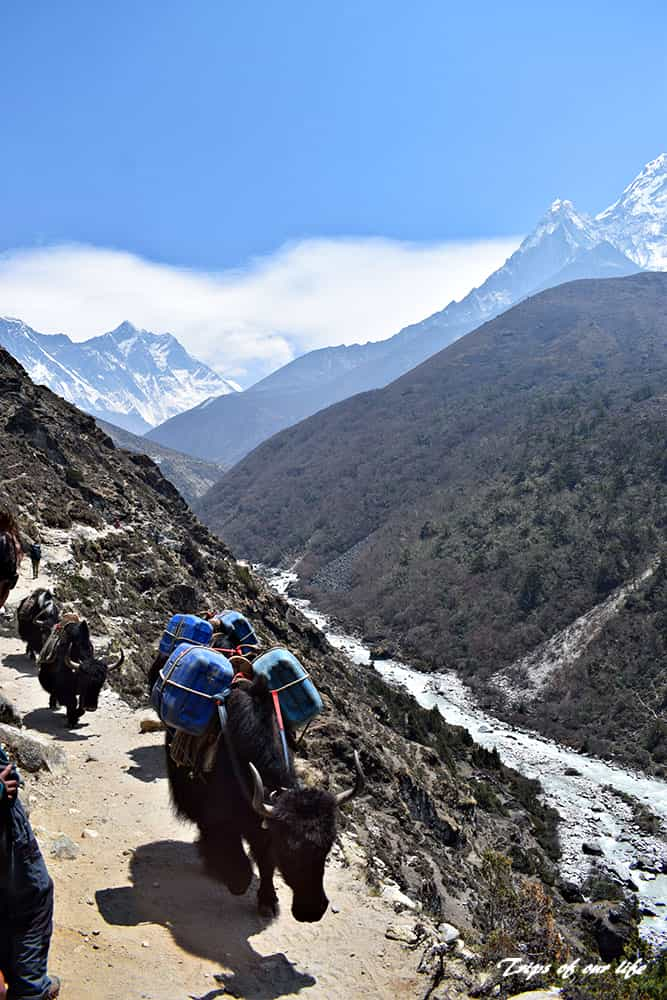
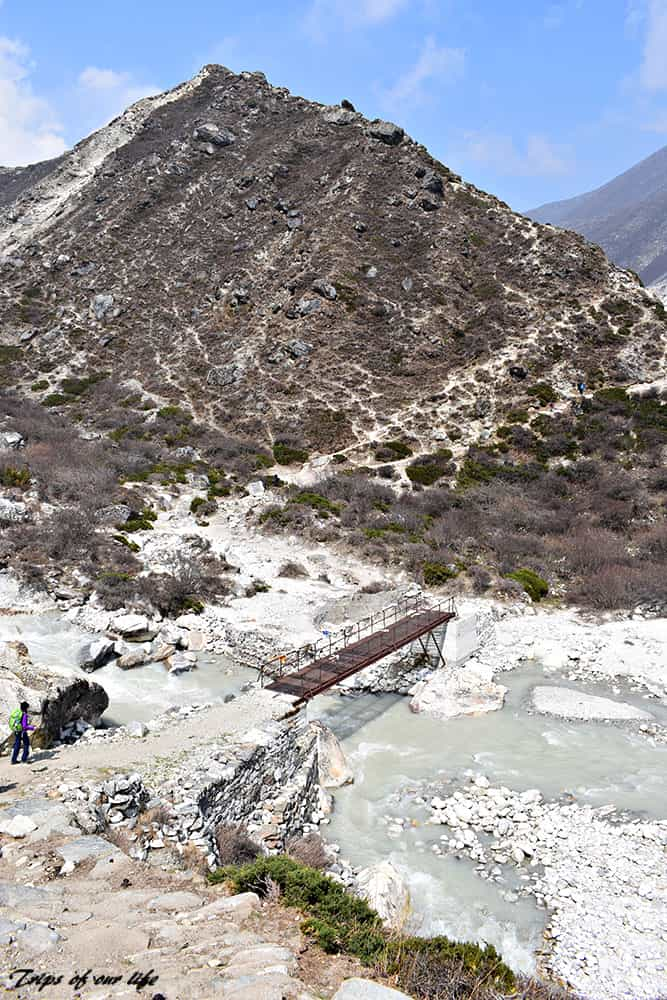
Day 6
Trekking to Lobuche (5030 m) – 12 km., 7 1/2 hrs.
At dawn, I was still awake after a hard, sleepless night. It was the first time after so many days I had not slept at all! I was feeling like choking, and I was breathing with enormous difficulty while lying on bed. The temperature was constantly minus and the room was freezing cold. Worse still, we found our clothes wet in the morning, due to the high humidity. It felt very hard to get out of our warm sleeping bag, go to the cold bathroom, and then put on our wet clothes and pack our things for departure.
During breakfast time, we all looked very worried. Altitude sickness (AMS) had slowly begun to affect everyone, with various symptoms. A couple from our group had already left by helicopter the previous day, and most of us had already headaches. Some of our group had used the recommended pill (diamox), which has several side effects. Their fingers and toes paralyzed, so they couldn’t hold the trekking poles or walk normally. I was having an early headache, which luckily stopped as soon as I took a simple painkiller. I don’t know if it was because of the lack of sleep, but I didn’t deal with any headache issue again since then, in the whole trip. Still, my breath was getting worse and my nose had already started to bleed.
After breakfast, we left the beautiful Dingboche village behind, and headed to the picturesque Thukla pass. The hike (at around 4.500m.) was normal in terms of difficulty, and the scenery was the second, most amazing one I laid my eyes on, during the whole tour! We were walking for hours on slopes, and next to cliffs that ended down in rivers. The whole scenery was so impressive and unreal, that took my breath away!
After passing the Thukla pass (Dughla pass) at 4.620m., we made a short stop at the «stone memorial». Here, in a large flat area, people have constructed small monuments of stones with colorful prayer flags, dedicated to the climbers who have lost their lives on the mountains. The sight was actually very touching, as the place was full of those monuments…..I wonder, how many unlucky climbers have tried to conquer the top of the world…
The trail to the next camp was quite smooth, and we reached Lobuche at the foothills of the namesake peak, in about one hour. After climbing a nearby hill, I had the opportunity to enjoy panoramic views of, not only Khumbu, the world’s tallest glacier, but also the Everest Base Camp, which we would visit the next day.
We stayed overnight in a teahouse in Lobuche, experiencing the very low temperatures and the lack of running water. For the first time, there was no water at all, not even for hand washing!
Another one torturing night was about to follow, with no sleep or rest at all, due to my breathing problems…..

One of the most breathtaking landscapes of out trip
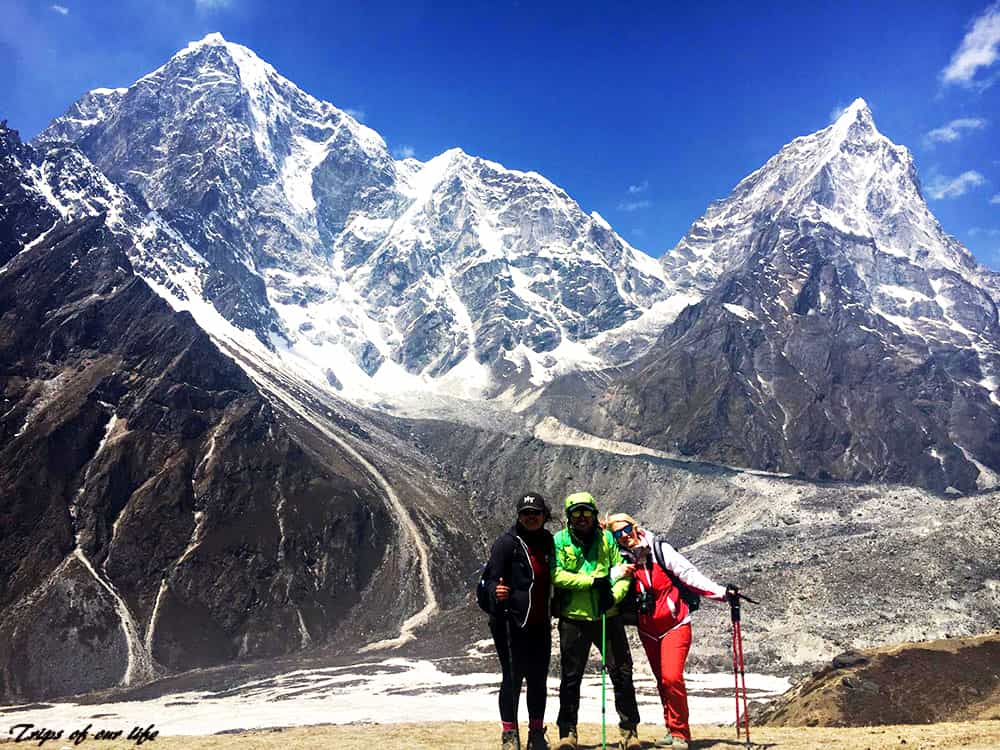
with our local guide on our way to Lobuche
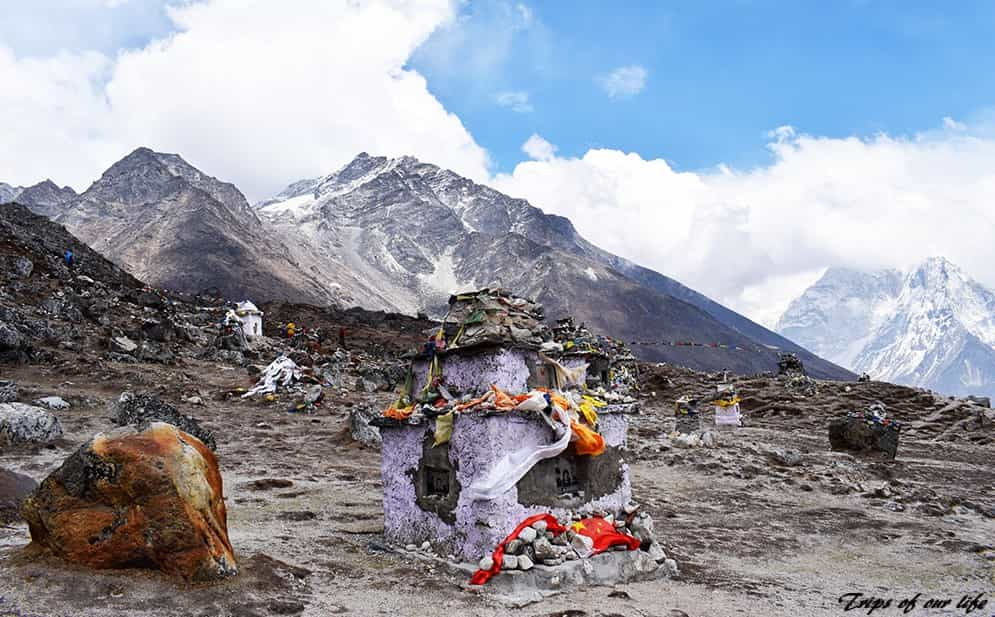
The stone memorials for the climbers and trekkers who lost their lives on the mountains
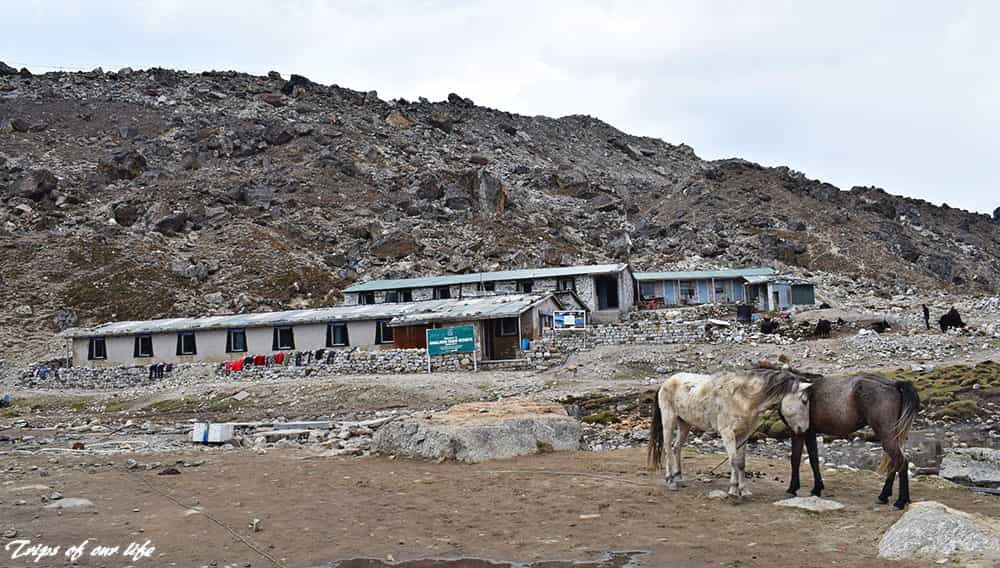
Lobuche settlement
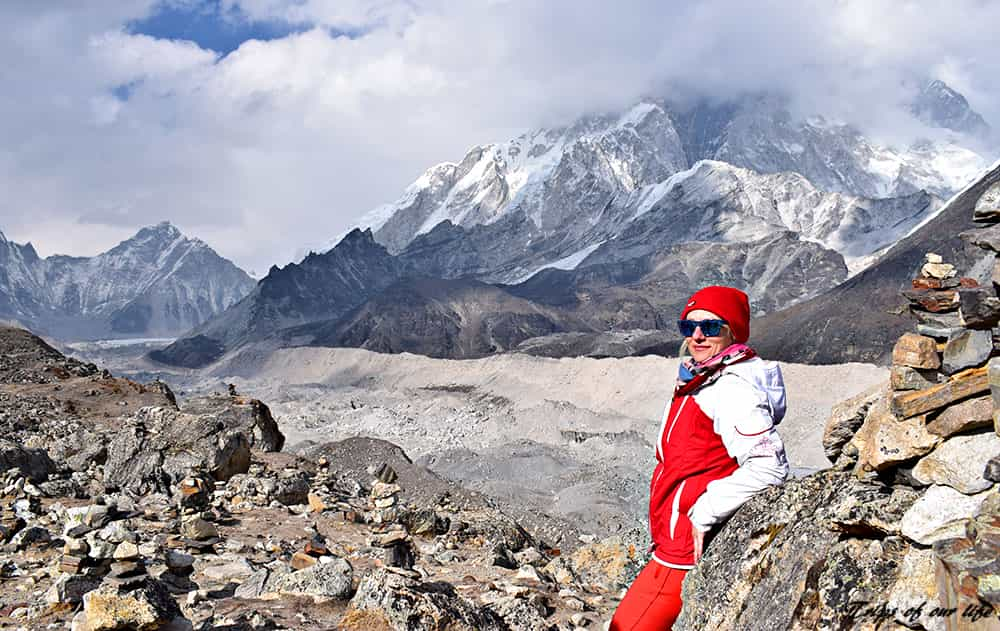
Facing the Everest Base Camp and Khumbu glacier at the back left side of the trail
